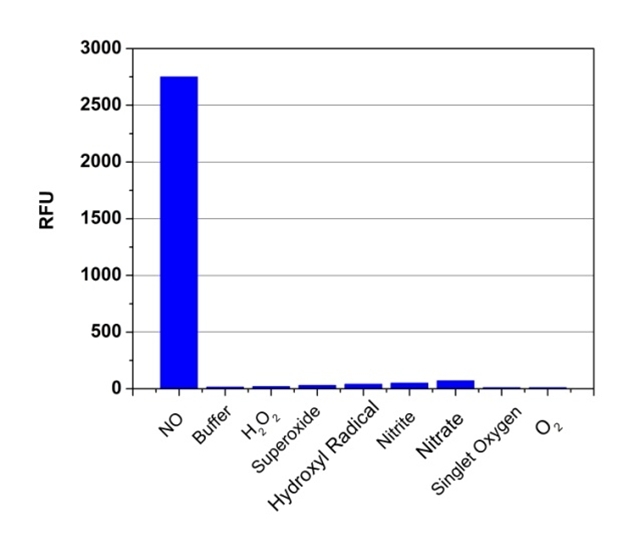DAX-J2™ Orange
DAX-J2™ Orange is a new nitric oxide (NO) sensor recently developed by AAT Bioquest. It is a non-fluorescent cell permeable reagent that can measure free NO and nitric oxide synthase (NOS) activity in living cells under physiological conditions. Once inside the cell the blocking groups on the DAX-J2 reagent are released to generate the highly fluorescent product upon NO oxidation. DAX-J2 fluorescent product can be detected using the filter set of Cy3® and TRITC that is equipped with most of flow cytometers and fluorescence microscope. DAX-J2 Orange has distinct advantages for NO detection than the popular DAF-2 NO probe: 1). It does not require esterase activity for NO detection. DAF-2 requires intracellular esterases to cleave its acetate groups for detecting NO activity. This esterase dependence often complicates the NO detection since esterse activities are affected by cell health and many other factors. 2). DAX-J2 product exhibits pH-independent fluorescence while DAF-2 has its fluorescence highly affected by pH. 3). DAX-J2 fluorescent product is much more photostable than DAF-2 product.


| Catalog | Size | Price | Quantity |
|---|---|---|---|
| 16300 | 1 mg | Price |
Physical properties
| Molecular weight | 476.57 |
| Solvent | DMSO |
Spectral properties
| Excitation (nm) | 552 |
| Emission (nm) | 575 |
Storage, safety and handling
| H-phrase | H303, H313, H333 |
| Hazard symbol | XN |
| Intended use | Research Use Only (RUO) |
| R-phrase | R20, R21, R22 |
| Storage | Freeze (< -15 °C); Minimize light exposure |
| UNSPSC | 12352200 |
Contact us
| Telephone | |
| Fax | |
| sales@aatbio.com | |
| International | See distributors |
| Bulk request | Inquire |
| Custom size | Inquire |
| Technical Support | Contact us |
| Request quotation | Request |
| Purchase order | Send to sales@aatbio.com |
| Shipping | Standard overnight for United States, inquire for international |
Page updated on January 17, 2026

